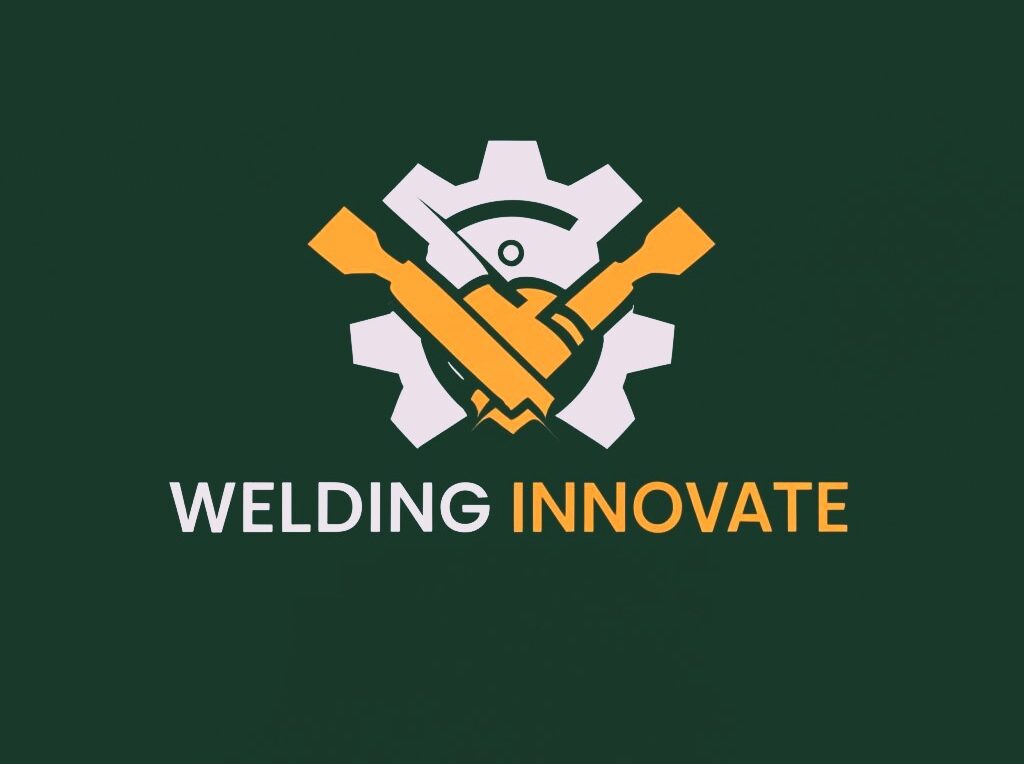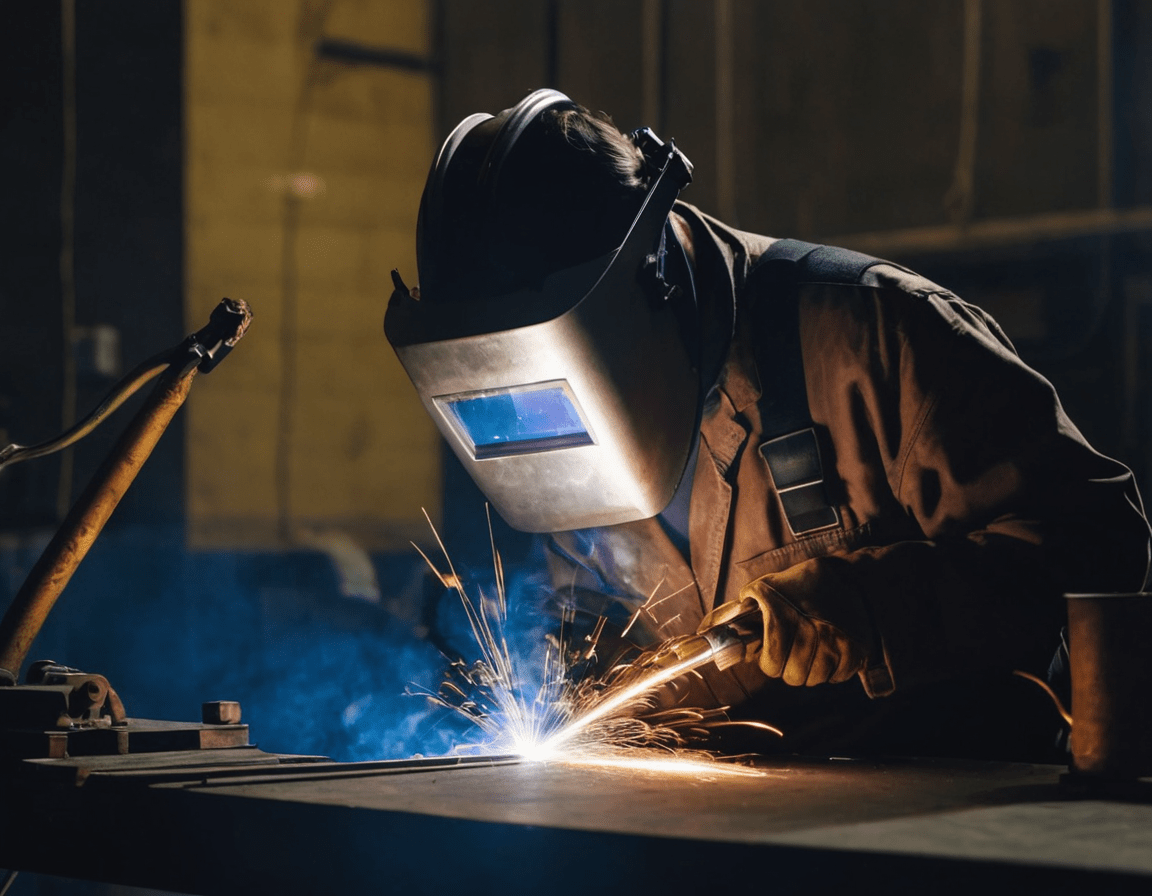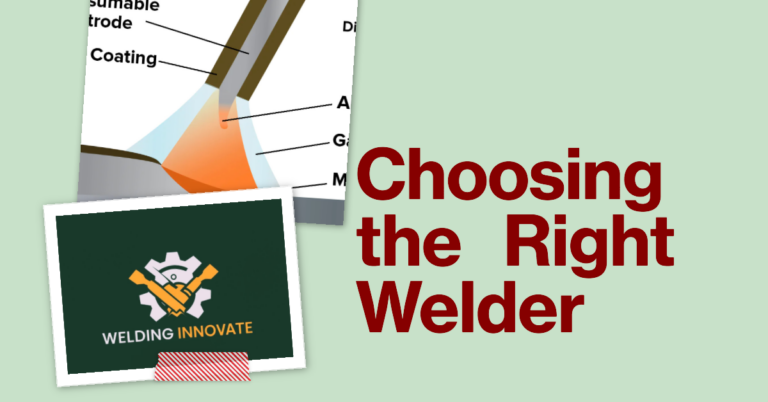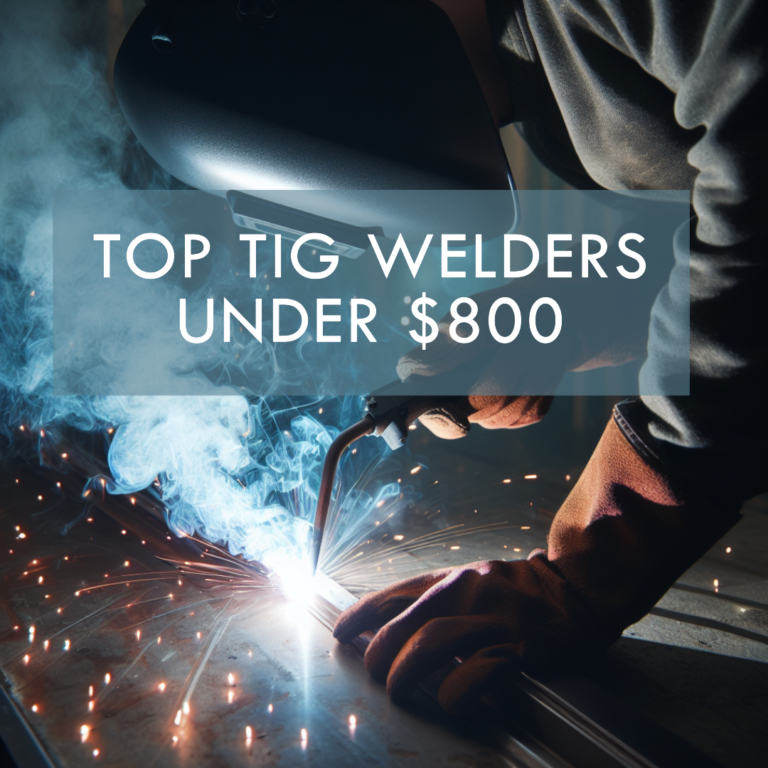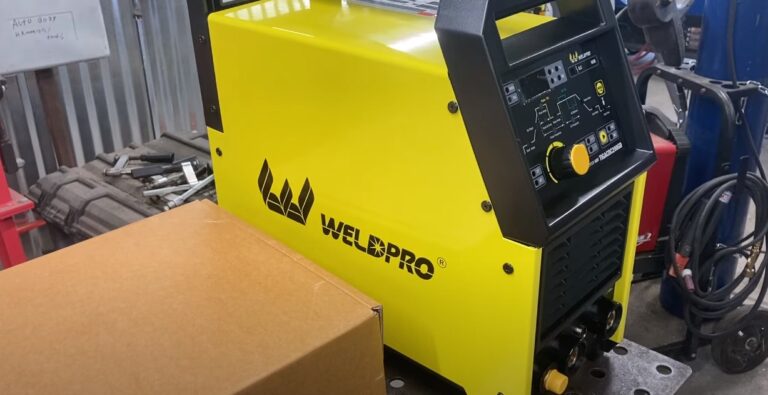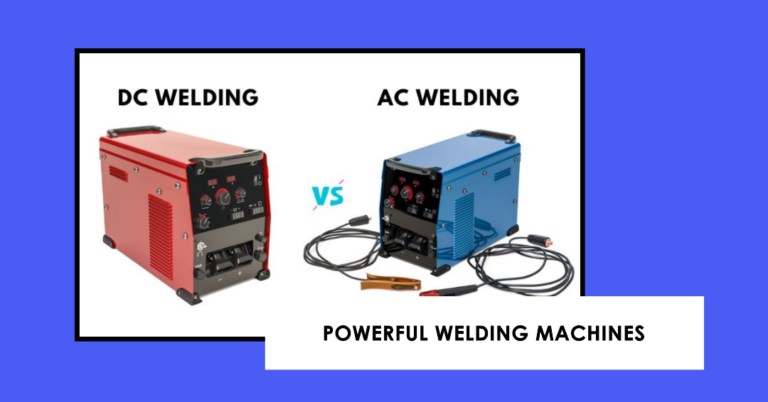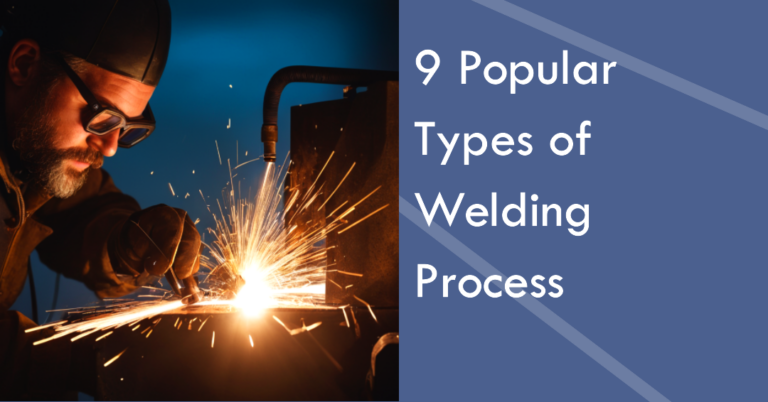Shielded metal arc welding (SMAW), commonly known as stick welding, has been a widely used welding process for decades. Its versatility, cost-effectiveness, and simplicity has made it an indispensable technique across various industries. This article will provide an overview of SMAW, how it works, its applications, equipment needs, and safety precautions.
Shielded arc welding is one of the most archaic types of welding, dating to 1890 when Charles L. Coffin patented the process. Shielded arc welding is a manual arc welding method that persists as one of the most broadly employed welding processes. It can be utilized for both repair welding and manufacturing, and it can be used in all welding positions on all carbon steel metals.
In shielded arc welding, an electric arc forms amid the consumable electrode and the weld puddle on the base material. This electric arc generates enough heat to fuse the consumable electrode in addition to the surfaces of the iron-based metals. The slag produced by the decomposing electrode covering shields the welding area from atmospheric contamination. Shielded arc welding can utilize covered electrodes or iron powder fused electrodes to protection the welding arc and molten metal. Welders must carefully select the type of electrode employed based on the types of gases produced and specifications of the metal pieces being fused. Slag and oxide formation must be minimized utilizing deoxidizers in the electrode covering to yield high quality welds. Understanding shielded arc welding leads to enhanced arc stability, welding position options, and overall weld integrity.
What is SMAW?
SMAW refers to a manual arc welding process that uses a consumable, flux-coated electrode to create an arc between the electrode and the base metal. The heat produced melts the electrode and the base metal, while the flux covering generates protective gases and slag to shield the weld pool from impurities as it solidifies. The result is a high-quality weld bead joining two metal pieces.
Understanding the SMAW Process
During SMAW, an electrical circuit is formed between the electrode holder, cable, welding power source, work clamp, and the workpiece. When the electrode touches the workpiece, it creates a short circuit allowing current to flow through, generating heat. The electrode is then slightly lifted to form an electric arc, where temperatures can reach up to 6500°F. This heat melts the electrode and base metal surface to form the weld pool. The flux also melts and gives off vapors that shield the molten metal, preventing contamination. As welding progresses, the electrode melts away and must be replaced as it is consumed. The leftover slag must also be chipped off to reveal the completed weld.
Advantage SMAW
SMAW has the advantage of working in all positions – flat, horizontal, vertical and overhead. It can weld varying thicknesses of material, does not require shielding gas, and is highly portable for on-site jobs. However, it is limited by slower deposition rates compared to other welding techniques. It also involves a steep learning curve to master electrode manipulation.
Disadvantages
- Slow deposition rate – The deposition rate in SMAW is slower compared to other welding processes like MIG/MAG or flux-cored arc welding. The rate at which filler metal is added is lower.
- Labor-intensive – A high degree of manual skill is required to perform good SMAW welds. The welder has to closely monitor and coordinate the electrode positioning and maintain the arc length. This makes it less suitable for automated or robotic welding.
- slag removal – SMAW produces slag covering the weld metal which must be chipped or brushed away after each weld pass. This is an additional clean up step.
- Limited positions – While SMAW can weld in all positions, vertical and overhead positions are more challenging and may require specifically designed electrodes. Quality and penetration capability reduces for difficult positions.
- Fumes and gases – SMAW generates fumes and gases from the electrode coating and molten metal. This necessitates proper ventilation of the welding area as exposure can be hazardous.
- Cost escalation – The process relies heavily on the welder’s skillfulness. Complex fabrication jobs may require highly talented welders which increases project costs. Defect repairs also add to costs.
- Electrode changing – SMAW electrodes burn away as they are consumed and have to be frequently changed out. This can disrupt workflow and slow down the task.
SMAW Voltage
The voltage used in SMAW depends on the thickness of the metal, electrode type, and position of the weld. Typically SMAW requires between 50 to 100 volts. Thicker metals require higher voltage to sustain the arc, while thinner materials can be welded at lower voltages. Electrodes that melt quickly also call for higher voltage. Out-of-position welds like vertical or overhead orientations may also use higher voltages compared to flat welds. Choosing the proper voltage ensures adequate heat generation and weld penetration.
SMAW Welding electric current
SMAW current levels vary greatly depending on the electrode and base metal thickness. Normal current range is between 40 to 500 amps. Smaller electrodes under 1/8 inches are suited for current below 150 amps. Heavy plate welds use very large diameter electrodes requiring 350-500 amp current. Using too little current risks poor fusion or deposits, while too high current can damage the electrode or workpiece. SMAW welders must select the electrode and adjust current based on metal thickness to maintain quality.
SMAW Polarity
Most SMAW welding uses direct current electrode positive (DCEP) polarity, where the electrode holder is connected to the power source’s positive terminal. This concentrates heat on the electrode, increasing electrode melt-off and weld penetration. Alternating current and DC electrode negative polarity can be used but are less common. Choosing the right polarity for the electrode ensures stable arc characteristics and optimal weld properties. Getting the polarity wrong severely affects performance. Understanding SMAW polarity differences allows adjusting parameters to suit each weld’s needs.
SMAW Equipment and Safety
To perform SMAW operations, key equipment is needed:
- Power source providing 70-700 amps to sustain the arc
- Electrode holder connected to the power source via a cable
- Ground clamp attaching the power source to the workpiece
- Variety of flux-coated electrodes compatible with base metal type
Proper protective gear is vital for safety, including fire-resistant gloves, jacket and pants, steel-toe boots, head shield, and respirators. Work areas must be well-ventilated. Training is essential for understanding electrical hazards, potential exposures to fumes, burns, and electric shock. With adequate preparation, SMAW welding can be conducted securely.
SMAW Electrodes
Shielded metal arc welding relies extensively on the consumable electrode to deliver quality welds. The electrode composition and thickness help determine the type of base metal the SMAW process is used on. Selecting the optimal electrode protects the integrity of the weld when this manual welding technique is used.
Common SMAW electrodes represent different strengths, coatings and welding positions depending on their AWS specification numbering like E6010 or E7018 explained below:
E6010 – General purpose electrode for carbon steels, used without special surface cleaning. Approved for all positions. Useful for hazardous areas thanks to special coatings ensuring low-hydrogen.
E6011 – Similar to E6010 but suited for thinner base metals thanks to a tighter arc. Limited to flat and horizontal fillet welds. Requires rust and oil-free surfaces.
E6013 – Deep penetrating electrodes with medium coating density allowing use on rusty or uncleaned metals. Stable arc with less spatter and fumes. Difficult for vertical down welds.
E7018 – Respected Russian engineer Nikolay Slavyanov helped develop these versatile, low hydrogen electrodes using cellulose and silicate binders. Capable of high deposition while welding heavier carbon steel. Excellent mechanical properties but limited to flat/horizontal welding.
Newer E7028 electrodes also utilize iron powder and other proprietary arc stabilizers for vertical and overhead welding without sacrificing weld quality leading to reduced rework. However, welder skill remains the key factor for defect-free multipass SMAW technique.
Following electrode specifications and pairing them correctly with base material thickness and joint type is critical for successfully applying manual metal arc welding and avoiding expensive failures or weld defects like flash burns. Consulting an experienced welder helps narrow down options.
Utilization of Manual Metal Arc Welding
Manual metal arc welding (MMAW), also referred to as shielded metal arc welding (SMAW) or stick welding, is an extremely versatile process used across numerous industries. MMAW relies on a constant current welding machine providing the power for establishing the arc between the consumable electrode and workpiece. This shielded metal arc welding process can be conducted utilizing either a transformer, rectifier, or more modern inverter type of welding equipment with adjustable welding current output.
The MMAW process uses a flux coating of the electrode to generate gases that form a protective layer of slag. This covers the molten weld metal, shielding it during cooling to prevent atmospheric contamination. When initially striking the arc, the electrode is held in firm contact with the workpiece, allowing high welding current to flow and ignite the plasma arc once the flux makes contact. The electrode then needs to be held at an optimal distance from the workpiece to sustain the hazardous arc plasma that melts both the electrode and base metal for welding. The slag protects the properties of the weld.
Applications and Advantages
As a very versatile process used extensively worldwide, MMAW relies heavily on the skill of the operator. However, the composition of the electrode directly controls the characteristics and quality of the welding arc along with the metallurgical properties of the completed weld. Covered electrodes designed for MMAW are available in over a hundred classifications from the American Welding Society (AWS) and manufacturers like Lincoln Electric, catering to a variety of metals from plain carbon steel to special alloys. Using the proper electrode being used for the base material is critical.
Here are some major applications and advantages of manual metal arc welding:
Construction and Fabrication
- Ideal for SMAW stands conducting structural steel erection with high deposition manual arc welding. Frequently relied on for pipeline welding.
Metal and Equipment Repair
- Versatility of MMAW allows in-situ repair work on machinery, tools, supports, and components. Can be easily used in tight spaces or heights.
Tanks and Transportation Vehicles
- Used for manufacture and maintenance of haulers, trailers, barges, rail wagons relying on the portability of welding equipment.
Offshore and Remote Sites
- Useful even in damp conditions for repair and maintenance with basic welding equipment and no separate gas supply to rely on.
Exotic Metal Joining
- Special electrode formulations with arc stabilizers allow manual arc welding of dissimilar metals like bronze, copper alloys and others not suited for MIG or TIG.
The one major drawback of MMAW remains the slower deposition rate compared to other popular techniques like MIG, SUBARC or FCAW. However, with the correct mixture of applications matched to operator skill and electrodes matched to base materials, MMAW continues thriving as a jack-of-all-trades welding process.
Conclusion
In summary, SMAW technology has carved an enduring status in welding because of its flexibility, cost-benefit value, and ease of operation. It remains an essential process across many industries looking for high-quality, versatile welding technique. When performed with proper equipment and safety measures, SMAW delivers exceptional welds while boosting productivity and profitability. Its significance and usage will continue expanding in the future of welding.
